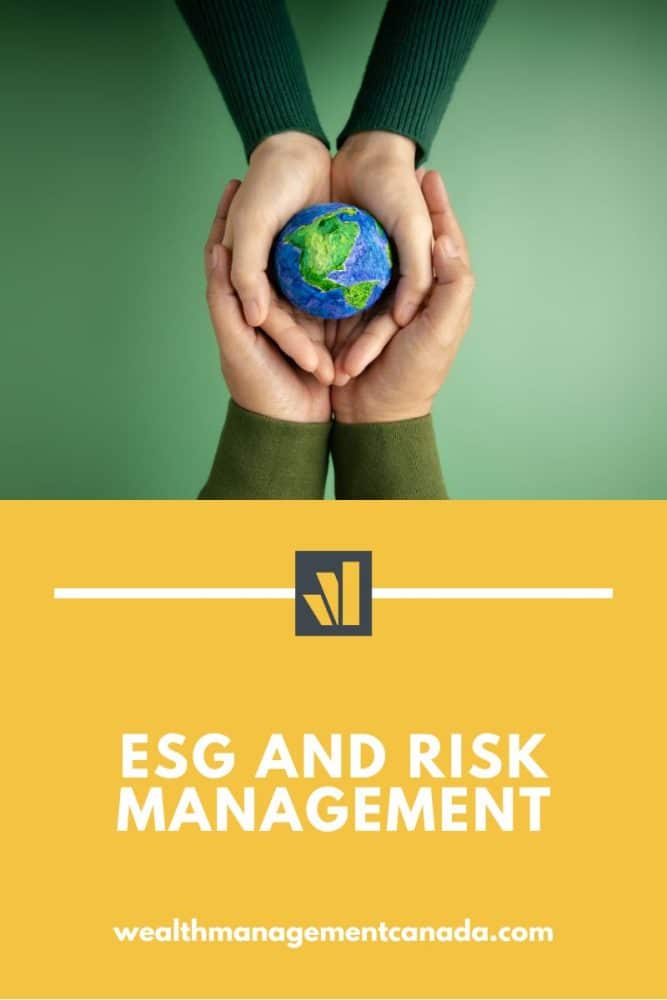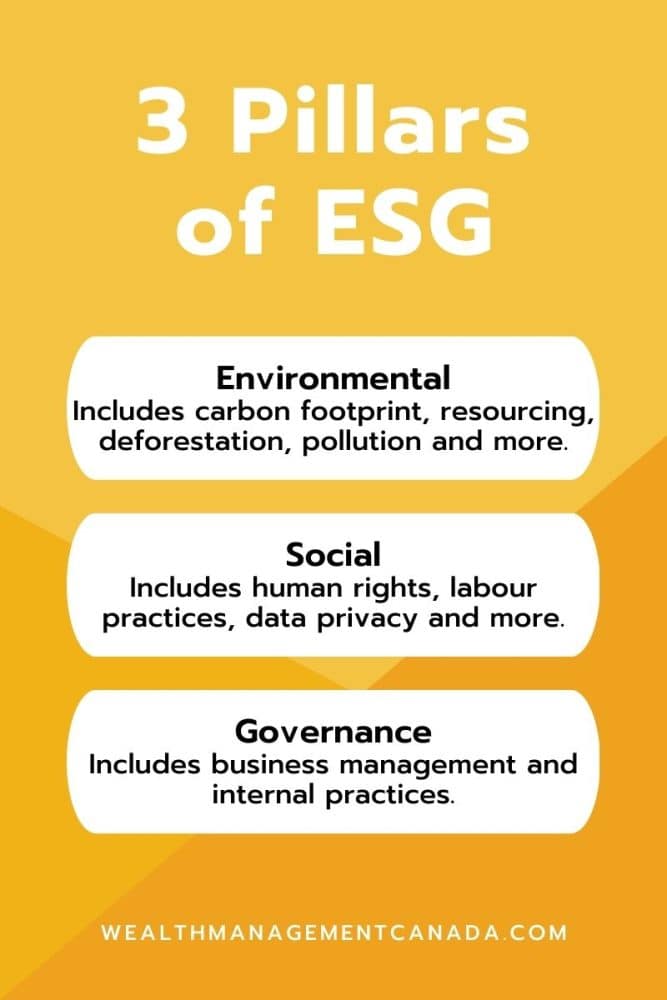Ever seen a carbon-neutral label on a coffee product or jewelry packaging? Perhaps you felt better about buying it! That’s because 54% of Generation X and 62% of Millennials and Generation Z see sustainability as a contributor to their buying decisions. A similar sentiment rises when it comes to investing, but environmental concerns are only a third of the puzzle. The full picture is ESG: a company’s environmental, social, and governance practices. Today’s businesses must consider ESG and risk management, then incorporate it into their overall strategy. Similarly, today’s investors should consider socially responsible investments. Why? Because stakeholders, investors, consumers, and partners, expect them to. We’ll walk through the pillars of ESG, risk management, and why companies and investors need to consider it.

Table of contents
What does ESG risk mean?
ESG risk is any environmental, social, or governance issues that could affect a company’s:
- Reputation: Consumer outrage at a company’s actions or behaviours could cause reputational damage. For instance, unreasonable pollution levels or exploitation of staff.
- Financial performance: Pharmaceutical company Valeant tanked in the stock market after the public discovery of price gouging. Applying ethics to everything, including finances, is important.
- Regulatory standing: Businesses are held to regulatory standards depending on their industry, and face fines and disciplinary action when they contradict them.
- Relationships: Important partners might remove their support and association from a company with ESG risks, like Adidas ending their partnership with Kanye West after his public Anti-Semitic remarks. Relationships are crucial for success in business, damaging them can be devastating.
- Buying power: Certain lenders, investors, and donors might restrict access to funds resulting from a business’ ESG risk.
Did you know two-thirds of global investors incorporate ESG considerations in their investments? This principle is becoming more and more commonplace, with a significant number of investors seeing a connection between strong ESG practices and investment returns. With younger generations placing more emphasis on ESG, profitability is even more likely in the long run.
What is ESG risk management?
ESG is any threat to your business or investment portfolio from an environmental, social or governance perspective. ESG risk management is the culmination of strategies, processes and tactics used to avoid and combat threats related to ESG. Normally, an entity’s ESG risk is assessed using an ESG score or some other similar metric.
Let’s dive a little deeper into what ESG means.
Related Reading: Business Owner Retirement Plan

START WORKING WITH A WEALTH MANAGER NOW
What are the 3 pillars of ESG?
ESG stands for environment, social, and governance. Bottom line? It’s how a business treats the world around it. Here’s a little more detail on the pillars of ESG:
- Environment: A company’s impact on the environment. Let’s say a shampoo company poured excess product into Lake Ontario — that’s an E issue. But carbon footprint, resource use, biodiversity, deforestation, waste management, and energy use are also considered.
- Social: A company’s impact on people around them and in the world. Remember when Zara customers reported calls for help on the labels, prompting backlash for human rights issues and unfair labour practices? Social in ESG also covers internal labour and hiring practices, human rights, diversity and inclusion, customer and employee satisfaction, data privacy, community activities, safety issues, and exposure to political issues.
- Governance: A company’s business management and internal practices. Let’s say a company executive bribes a government official for a big contract — like tech company ABB did to someone high up in the South African government for a $160-million electricity contract (yes, that happened). Other governance issues include unfair or disproportionate executive pay, board composition, and questionable audit practices.
As the CFA Institute reminds us, ESG issues are often linked. Even environmental issues can turn into social issues if you examine any people affected, and governance issues if you examine the business practices allowing it.

Is risk management part of ESG?
Yes, but more like ESG and risk management go hand in hand. Any risk management strategy should consider every potential risk in business, and that includes ESG risks. If you fail to address ESG in your risk management plan, you could face troubling events down the road. Further, ESG is becoming more and more important everyday. If you don’t factor it into your decision making now as an investor or business, you might not be profitable in the long run.
What are the biggest ESG risks?
We covered a few examples of ESG considerations above, but some are more striking today than others. Here are some of the biggest ESG risks today by pillar:
- (E) Climate litigation: Environmental disasters aren’t always natural — companies with poor waste management or pollution habits have caused harm to the earth and people. These companies now face class-action lawsuits that can financially ruin them.
- (S) Public trust and perception: Consumers care more and more about a company’s impact on people and the world now than ever. If businesses are careless in how they treat their vendors or anyone else in the supply chain, they risk losing public trust and respect — which could tank sales and stock value. Similar risks ensue when businesses aren’t transparent about their finances or policies. A recent example of this is the McKinsey scandal with Purdue Pharma related to “turbocharging” opioid sales through their management consulting work.
- (G) Employee practices: Today’s employee is empowered to speak out against unfair labour issues and move on to work for companies that treat them better. A company’s employee policies, wage equality, and labour law adherence could affect their bottom line. First, reputational damage is almost promised if an employee speaks out against their employer’s policies with evidence. Second, high employee turnover means more operational delays and barriers to making revenue. Happy staff = higher profits.
How is ESG risk measured?
You can assess a company’s ESG risk by identifying its ESG score. This is a letter-grade or number from 1 to 100 that analysts use to measure a company’s ESG. For example, Inditex, parent company of Zara, scored an E-, a fairly poor score in 2021 that’s only one grade away from F.
So, how do you come to these ESG scores? Analysts use a variety of information available to them, such as ESG reporting and disclosures, public information, and management interviews.
How to integrate ESG into risk management?
Let’s start with the basics: what is risk management? Risk management is identifying and preparing for any threats to your company’s success — in other words, financial performance and reputation. These risks are often external, like the COVID-19 pandemic, recession, legal responsibilities, and investment risks.
But internal risks cover ESG issues, and preparing for them should be part of a company’s overall risk management strategy. Similarly, investors use ESG risk management to predict companies with strong financial outlooks and minimal reputational or financial risk that could hurt their investment.
6 tips to integrate ESG and risk management
Here’s how you can integrate ESG into risk management:
- Study ESG frameworks: Investment firms have a wide range of frameworks to use as a reference in assessing risk. Some popular resources include task force on Climate-related Financial Disclosures (TCFD), Value Reporting Foundation’s SASB Standards, and Global Reporting Initiative.
- Study company news releases and media coverage: A quick “Google search” can show you any scandals, outrage, or otherwise unsavoury coverage of a company you plan to invest in, or your own firm. Look for anything related to climate, human rights, wage equality, or corruption. While a poor media clipping isn’t the be all-end all, think about your own values and morals. If the company you want to invest in doesn’t align, it’s pretty simple… don’t invest!
- Review company policies and financial ESG reporting: Some companies report ESG considerations in their portfolios — others don’t. But that’ll change soon, as Canada prepares for mandatory climate disclosure. For now, try to get your hands on any existing reports that can shed some light on an investment’s ESG risks.
- Conduct interviews: You might look for public interviews companies host about their operational practices, or request one yourself.
- Identify ESG risks: Create a list of every ESG risk you could think of for your brand. Similarly, do the same if it’s for a brand you plan to invest in.
- Adhere to ESG risk management guidelines (or create them): Put a plan in place to address ESG risks. A company might create mandatory regulatory meetings to keep staff, investors, and executives up to speed. You might also create a roadmap to offer a path to success if an ESG risk manifests.
How ESG and Risk Management Benefits You
Managing ESG risk is a win-win for both investors and businesses. This due diligence helps both parties avoid financial despair and falling out of the public’s good graces. Plus, organizations can stay on top of regulatory and reporting requirements more easily. Not to mention, you can feel good about your decisions when you pay attention to ESG!
The result? More returns. US companies with high ESG scores scored a 2.6x higher shareholder return than companies with mere medium scores. Furthermore, investors backed ESG funds worth $122 billion more in ESG funds in 2021 than in 2020.
Bottom line? Managing ESG risk helps you retain your revenue, investment, and wealth, really. If you’re interested in finding more ways to manage and retain wealth, your first step is to talk to a wealth manager.
Read More: How to Invest in Private Equity